It’s been a little while since my last blog about lure fishing for bass. Life has been extra busy this year due to going self-employed and time at the keyboard. That doesn’t mean to imply I haven’t been fishing, I’ve been keeping up and the highlight of my angling, once again, has been my boat lure fishing for bass. In this article, I’m going to share some insights into how I approach fishing afloat for my favourite species.
It’s true to say that boat lure fishing for bass can be successful by casting and retrieving lures while drifting a mark, much like shore fishing. However, my personal favourite way is to fish vertically or traction. These are techniques that have been perfected by the French and have seen increasing popularity among UK anglers. Historically, drifting for bass in the UK has been done with flying collar setups, a long flowing trace with a heavy lead attached to a plastic or metal boom. On the business end there would be a small shad, imitation eel or a live bait.
With the invention of strong, thin braids such as our HTO Nebula X8 or No Fade Braid, it is now possible to fish direct to a weighted lure, without the need of a long trailing trace, boom and heavy weight. This gives you a direct connection to the lure and the fish, giving you much more sport, feel and superior presentations. This has resulted in some spectacular bass lure fishing from boats for me and many other bass anglers up and down the UK. It is important to emphasise, that much of our angling, it is all about location, location, location. If you get the location correct, these techniques are absolutely deadly.
I’ve been lucky to fish with some anglers who I consider to be among the very best in the country at this style of angling. Make not bones about it, I’ve learnt everything I’m sharing here from them. So this isn’t me claiming to be an expert on this kind of fishing. These anglers include Martin Donald, skipper of the excellent Littlehampton based charter boat, Spirit of Arun 2. Pete Cook, who has been part of the HTO Lures team since the start, and Luke Tickle, a fish magnet and talented lure inventor in his own right.
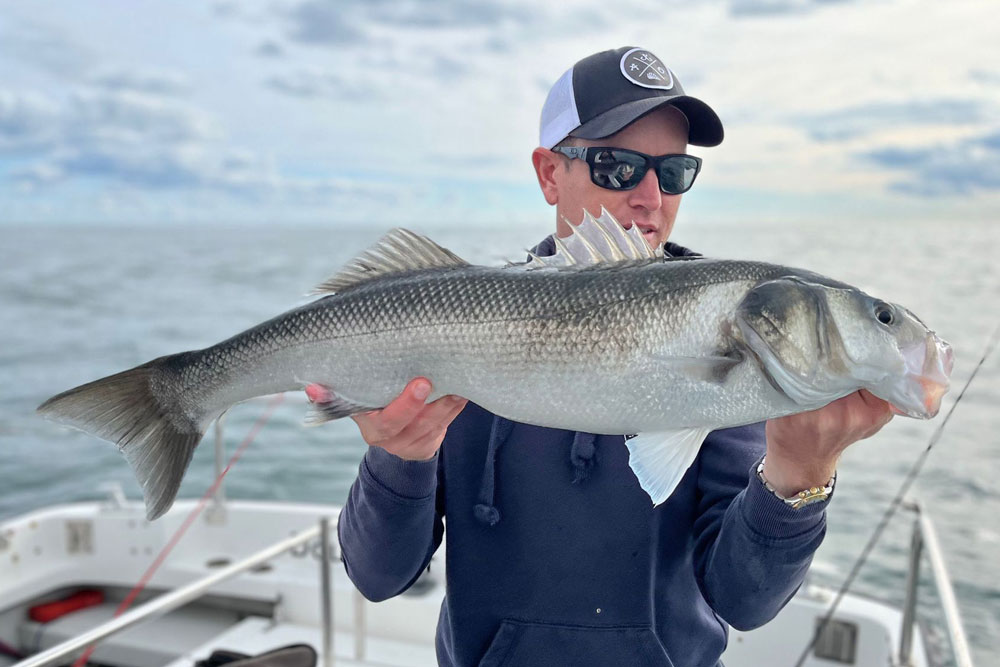
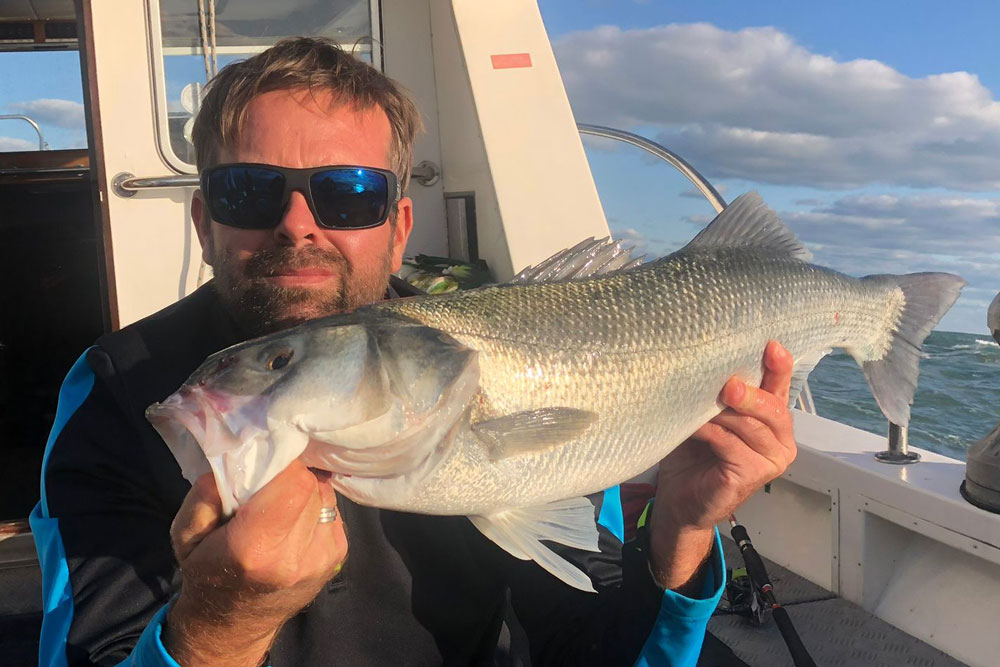
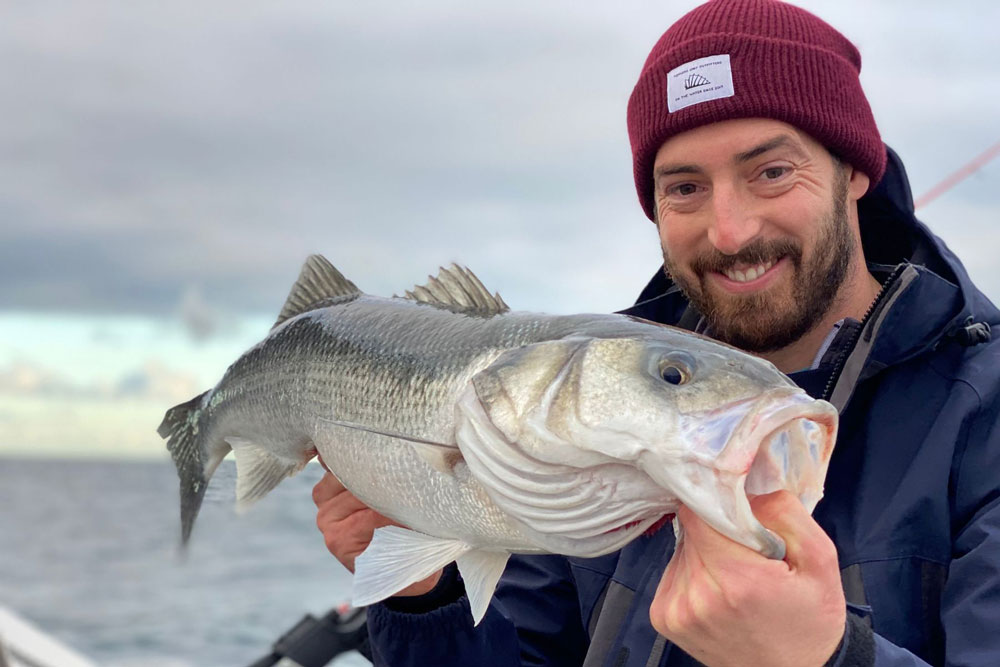
In addition to this trio, I’ve been lucky to fish with many other friends afloat, having some real adventures with some top-end anglers. All of whom I initially met from my Facebook Group, UK Bass Lure Fishing. I started this group in January 2017 and despite the highs and lows, it continues to help anglers and do great things for conservation. But I digress, let’s get on to the fishing!
My first-ever vertical boat bass lure fishing trip was with Luke. I got taken to school by him, which is standard, but it opened my eyes hugely to the possibilities this type of fishing offers. Not long after this, we got to fish with Martin and Pete aboard Martin’s private boat, Blueprint. This trip really helped me to get to grips with the methods involved.
Lure fishing for bass from a boat vertically can be simplified in three steps.
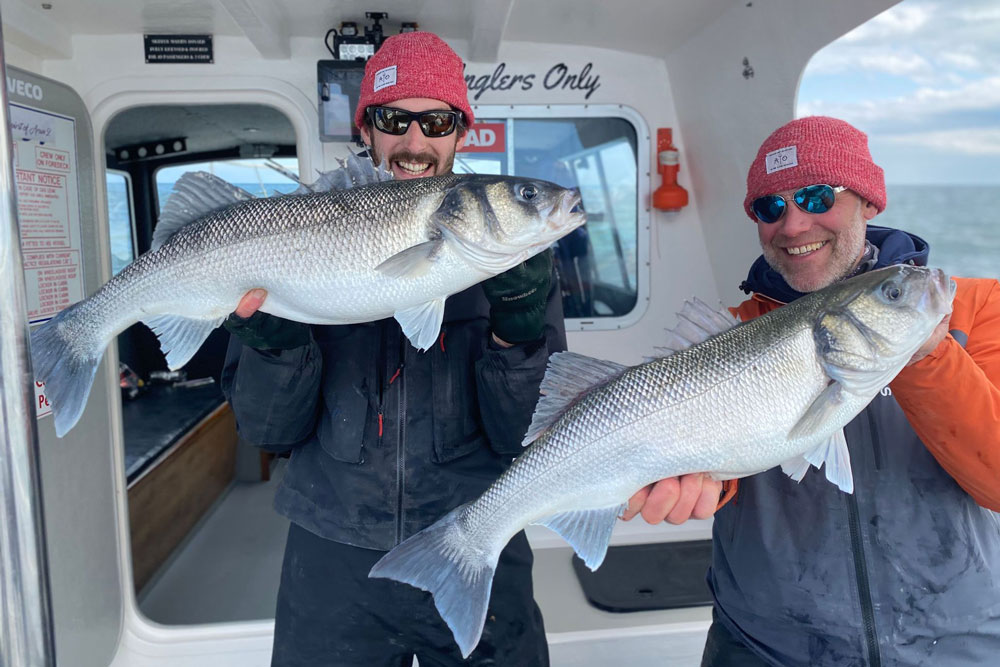
Location
You need to find the marks! The best way to locate bass marks is to study charts. Back in the day, this would involve pouring over Admiralty charts, These could be quite inaccurate at times. The advent of Navionics and other charting apps have massively upped the game. They have fully shaded charts with accurate views of the sea bed, all at our fingers and all constantly updated with new information.
You are seeking a change of depth on the seabed over a short distance. If the seabed quickly climbs over structure such as a sandbank or a reef over a short distance, this creates disturbances in the water that bass use to their advantage. They use this disturbance to ambush passing prey. These banks become features in their own right and attract large numbers of fish at times.
Bass marks are often given away by what are described as overfalls. These look like standing waves on the surface of the sea. A word of warning, these can be extremely dangerous and safety is paramount. The best way to fish this kind of mark, if you haven’t done so before, is with an experienced charter boat skipper.
Bass fishing afloat switches on when the tides are bigger. Coefficients of 70 plus usually return better results. You need a couple of knots of drift speed for things to fire up properly in my experience. Planning ahead with trips around spring tides can be essential for some marks. As always, though, time and effort equals reward, so you’ll only suss these marks with time invested and hard work.
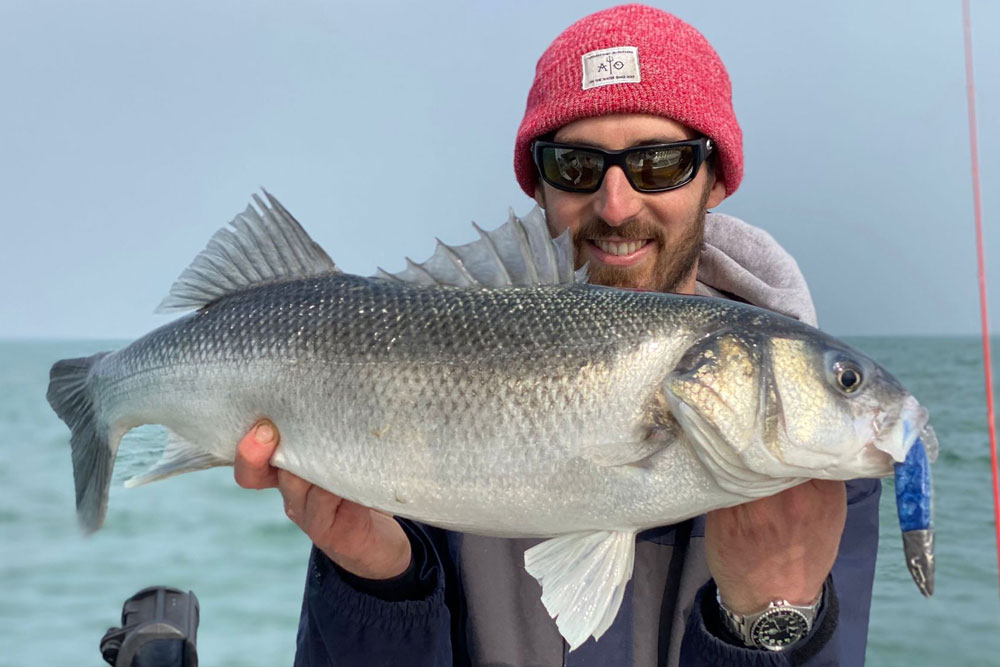
Technique
Drop the lure to the seabed, then lift your rod and drop it again. That’s basically it, well, almost.
The aim of the game is to present your chosen lure close to the seabed, while drifting towards and then over your feature. You want to be able to feel your lure at all times on a tight line, using the lightest lure you can get away with for the depth and conditions. Typically, with balanced tackle, you’ll be fishing with anything from 40 to 120g, with 60 to 90g more the norm for where we fish. If your lure sinks like a stone, you get less hang time, which is where the bites tend to come the most. Too little weight and you won’t reach the bottom or won’t feel the bottom, and you’ll get snagged. It’s a fine line, but after you’ve played the game of sacrifice to the reef gods with your handsome lures, you soon get a feel for what’s needed.
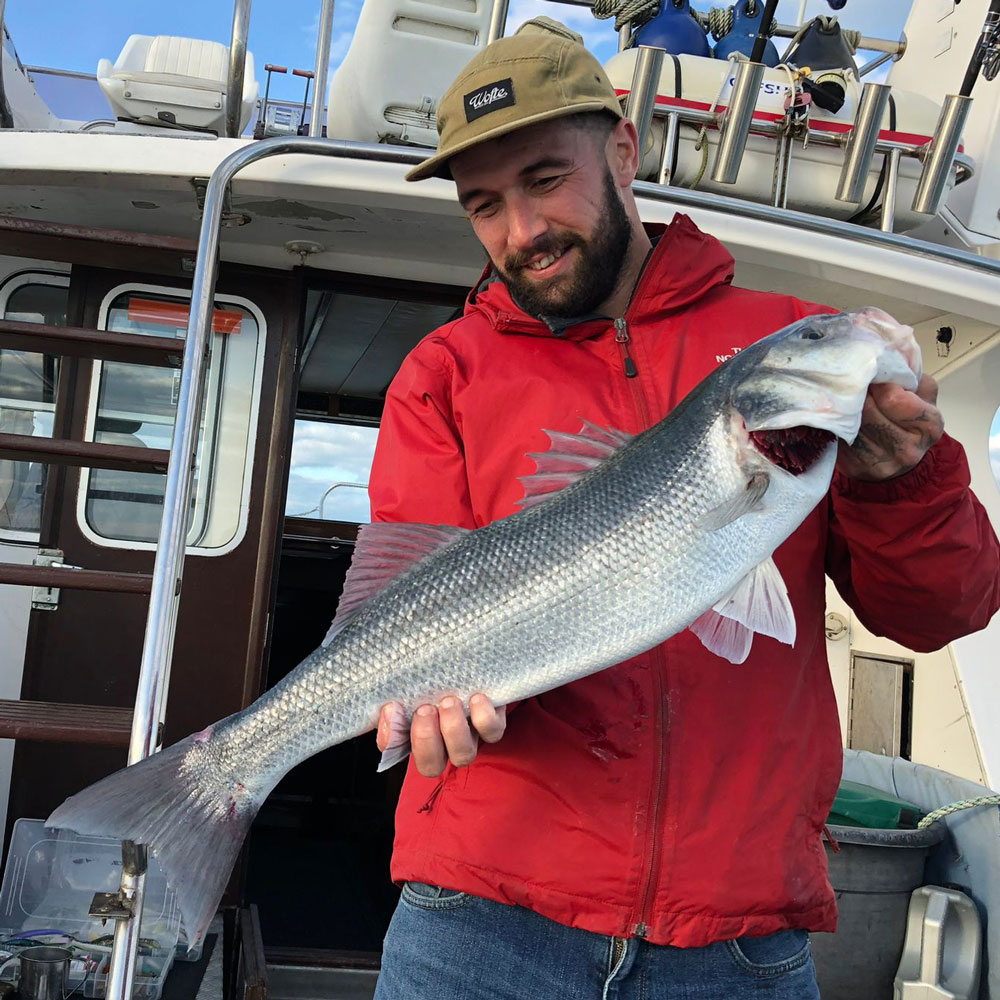
Open the bail arm at the start of the drift and let the lure find the bottom. You then need to gain contact immediately with the lure by closing the bail arm and lifting your rod. This is the pitch. Pitch the lure upwards. Some days you’ll lift the rod tip three feet, sometimes it will be six feet. The key, is always to stay in contact with that lure on the drop. Keep your line taut, a considerable percentage of your hits will come on the drop, hit them hard!
It’s important to remember that as you’re drifting along, you’ll be heading up the feature, so the water will shallow. Some marks might have half the depth in only a short distance. You’ll need to retrieve the line as you lift, or risk leaving your lure behind. If this happens, your presentation will be affected and your risk of snagging massively increases. You need to keep the lure vertical at all times, if possible.
Once you get to grips with the technique, you’ll want to start casting your lure towards the feature. This is especially critical on fast days when the tide is racing, or the wind is adding to the speed of your drift. This can be called traction, or, downtide jigging. It is a tactic that can add fish on days when fish are spooked by the boat. Get this tactic right with the lure hanging in the tide, and it can pick off the wiser, older and bigger fish.
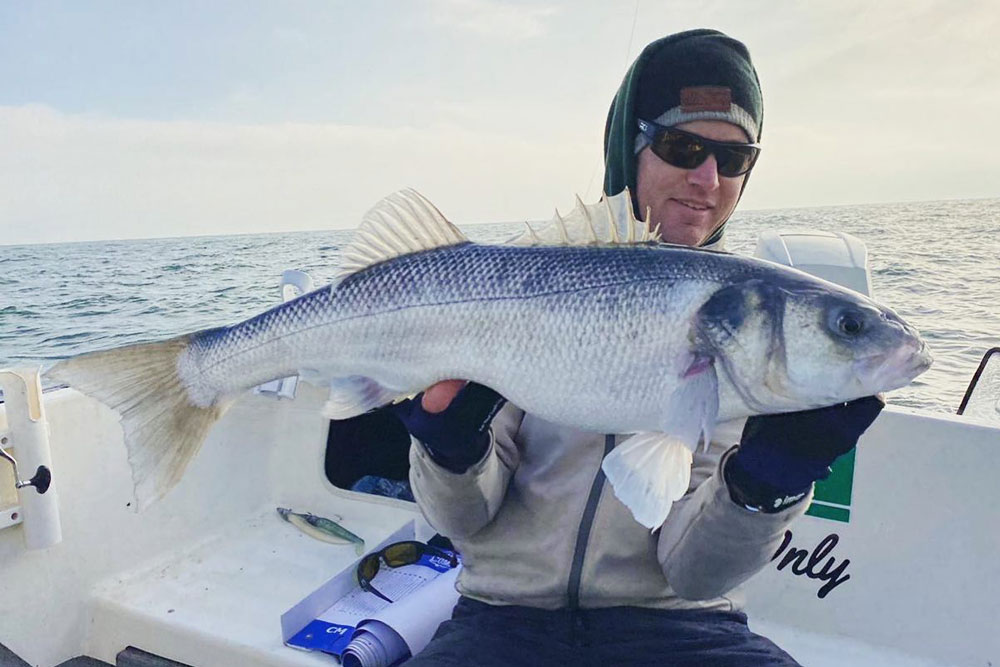
Boat Bass Lure Fishing Tackle
Long gone are the days of 12/20lb class rods, 12oz leads, 40lb leaders and everything else you associate with fishing over rougher ground and features. You don’t need these to fish wrecks, banks, or reefs when targeting bass. Scale down, and it shouldn’t cost you fish, it should gain them! You might lose a few lures, but, let’s be honest, if you get a hook in a reef with line from 10 to 40lbs, 99 out of 100 times you’re going to lose the lure.
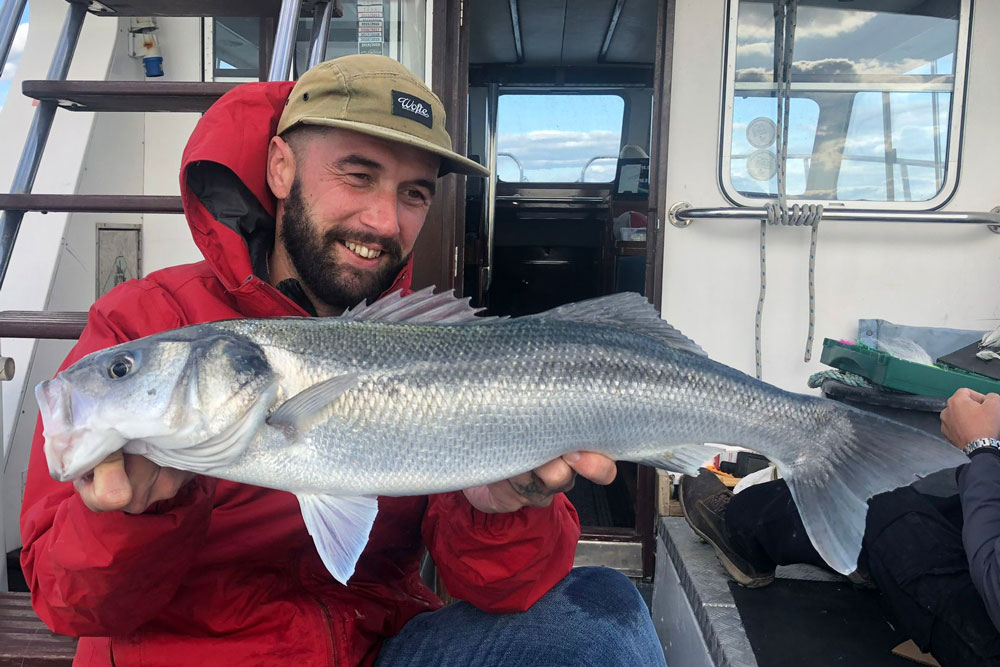
I now fish almost exclusively with the HTO Nebula SP rod. There are two versions, the 82 rated up to 160g vertically and the 73, rated at 100g. The 82 is my preferred weapon of choice, I prefer the slightly stiffer tip for setting hooks. I will drop to the lighter version when I’m using 60g lures for added feel. These rods are proven. I witnessed them during testing when they were prototypes on the French wrecks. They’re incredible value for money over other specific vertical lure rods, and you’re sacrificing nothing whatsoever over more expensive options. They’re my go to and the rod I recommend without any hesitation, every time.
I pair up the rod with a 3000 or 4000 sized reel, for me, the HTO Nebula reel and I load it with PE1 (20lb) thickness braid, either the Nebula X8 or No Fade Braid. You can go lighter than PE1 if you need to over cleaner ground, allowing you to use even lighter lures, maximising your hang time and catching more fish. To the braid, I add a Nebula FC fluorocarbon leader from 15lb to 20lb, depending on the ground.
Then we move on to lures. Personally, I keep it simple, picking natural colours, blues, khaki, pearly whites. It’s up to you whether you want a weedless or an open hook. I find myself using open hooks more and more these days. There is a new range of AXIA Mighty Minnows and AXIA Mighty Eels out to cover the heavier end of things, as well as the existing range. You’ll no doubt lose some, so take plenty with you.
It pays to play around on the day. Sometimes colour is key, other days it is all about the profile or the size. Weight is something to adjust too, remember, go as light as you can.
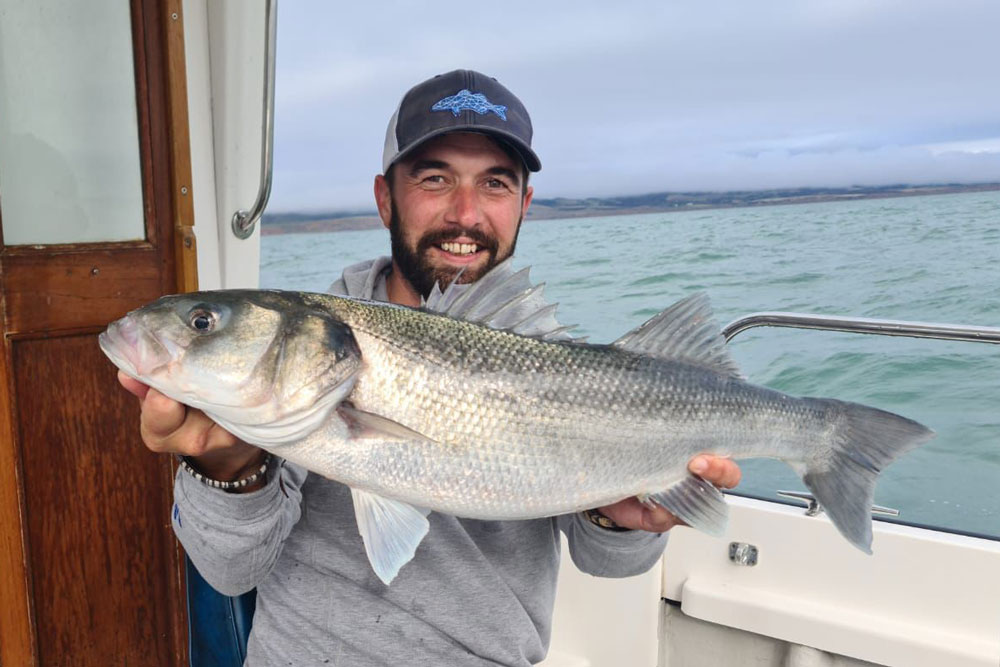
And that is that, my quick guide to fishing for bass on lures from a boat. Hopefully, it has been of use to you if you’re considering trying boat fishing for bass. Fishing from a boat and using the tactics above will offer you the best bet for a double figure fish these days. There are numerous charter boats for lure-specific trips. Pick a good skipper, grab your mates and catch 'em up!
Be Lucky – Rhys.


